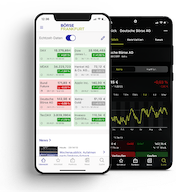Market sentiment: “Early hibernation?”

The ongoing sideways movement is causing many to take a back seat. Not a good sign, says Joachim Goldberg.
Summary
A small price range and multiple failures at the 23,900 mark have driven 8 percent of professionals and 12 percent of private investors out of short positions and, for the most part, to the sidelines. Only 3 and 2 percent, respectively, have entered the stock market. Joachim Goldberg suspects profit-taking.
The behavioral economist sees the rise in prices since last Wednesday as former pessimists covering their positions, which makes a short squeeze less likely. A DAX rise well above 24,000 points is only likely to succeed with international investors with a long-term orientation. In addition, support on the downside is less strong. Overall, this is a worse scenario for the DAX.
10 September 2025. FRANKFURT (Goldberg & Goldberg). Apparently, it was just a brief moment of panic: no sooner had we titled our commentary “Wake up” last Wednesday than the DAX returned to calm and even produced the narrowest trading range of the entire year at 1.4 percent. The warnings of a financial crisis, the rise in yields on the US and UK bond markets, and fears of a traditionally difficult month for the stock market in September, which may have previously affected the DAX, were apparently forgotten. At the end of the sentiment week, the index posted a gain of 1.1 percent, but the truth is that the stock market barometer's interim advances repeatedly failed to even reach the 23,900 mark. Three attempts to do so were repelled. Despite important developments on the geopolitical and macroeconomic stages, one could even get the impression that the DAX had gone into a kind of early hibernation.
Delayed profit-taking
Meanwhile, the pessimists, who were in the clear majority last week, have apparently done what they could have done last Wednesday: cover short positions and take profits. At least, that is what the latest sentiment survey among institutional investors with a medium-term trading horizon suggests. Our Frankfurt Stock Exchange Sentiment Index reacted with a gain of 11 points and now stands at a new level of -7. At the same time, the bear camp has shrunk significantly by 8 percentage points, with a majority of just over 60 percent of those willing to switch sides now sitting on the sidelines. The remaining investors have even moved directly to the bull side, presumably with substantial profits from their previous positioning behind them.
The mood among private investors has also improved significantly compared to the previous week: our Frankfurt Stock Exchange Sentiment Index rose by 14 points in this panel to a new level of +2. The group of bears decreased by 12 percentage points, with most private investors (83 percent of those willing to switch) joining the neutral players. This shift in sentiment is primarily attributable to the investors we surveyed via social media. Among the remaining private investors, however, it is not only the bear camp that has shrunk by 11 percentage points. There has also been a reduction in the number of bulls (4 percentage points), meaning that the group of neutral investors in this subgroup has grown by 15 percentage points. This has also had an impact on the overall result: with a total share of 26 percent of all respondents, the group of “neutral” private investors is larger than ever before this year.
Nearly neutral
Today's survey shows that the gap in sentiment between private and institutional investors has widened significantly. Excluding the subgroup of respondents surveyed via social media, private investors are even more pessimistic than their institutional counterparts. Although the latter are still slightly pessimistic in absolute terms, with a sentiment index of -7, in relative terms they can be said to be almost neutral when looking ahead three and six months.
At the same time, today's developments suggest that the DAX's rise in price compared to the previous week is largely home-grown and can be attributed primarily to the aforementioned buybacks by former pessimists. Unfortunately, this does not make a significant rise in the DAX due to domestic positioning and the reduction of potential imbalances any more likely. In other words, a so-called short squeeze from domestic sources is practically unthinkable at present, and a DAX rise well above 24,000 points is likely to only succeed with the help of long-term investors, primarily from abroad. At the same time, the demand situation (now probably in the 23,300/350 range) has deteriorated somewhat. The same applies to the sentiment-related situation of the DAX.
by Joachim Goldberg
10 September 2025, © Goldberg & Goldberg for boerse-frankfurt.de
Sentiment index of institutional investors

| Bullish | Bearish | Neutral | |
|---|---|---|---|
| Total | 32% | 39% | 29% |
| vs. last survey | +3% | -8% | +5% |
DAX (change since last survey): 23.870 points (+280 points since last survey)
Frankfurt Stock Exchange Sentiment Index for institutional investors: -7 points (+11 points since last survey)
Sentiment index of private investors

| Bullish | Bearish | Neutral | |
|---|---|---|---|
| Total | 38% | 36% | 26% |
| vs. last survey | +2% | -12% | +10% |
DAX (change since last survey): 23.870 points (+280 points since last survey)
Frankfurt Stock Exchange Sentiment Index for private investors: 2 points (+14 points since last survey)
About the Frankfurt Stock Exchange Sentiment Index
The Frankfurt Stock Exchange Sentiment Index ranges between -100 (total pessimism) and +100 (total optimism), with the transition from positive to negative values marking the neutral line.
More articles from this columnist
| Time | Title |
|---|





